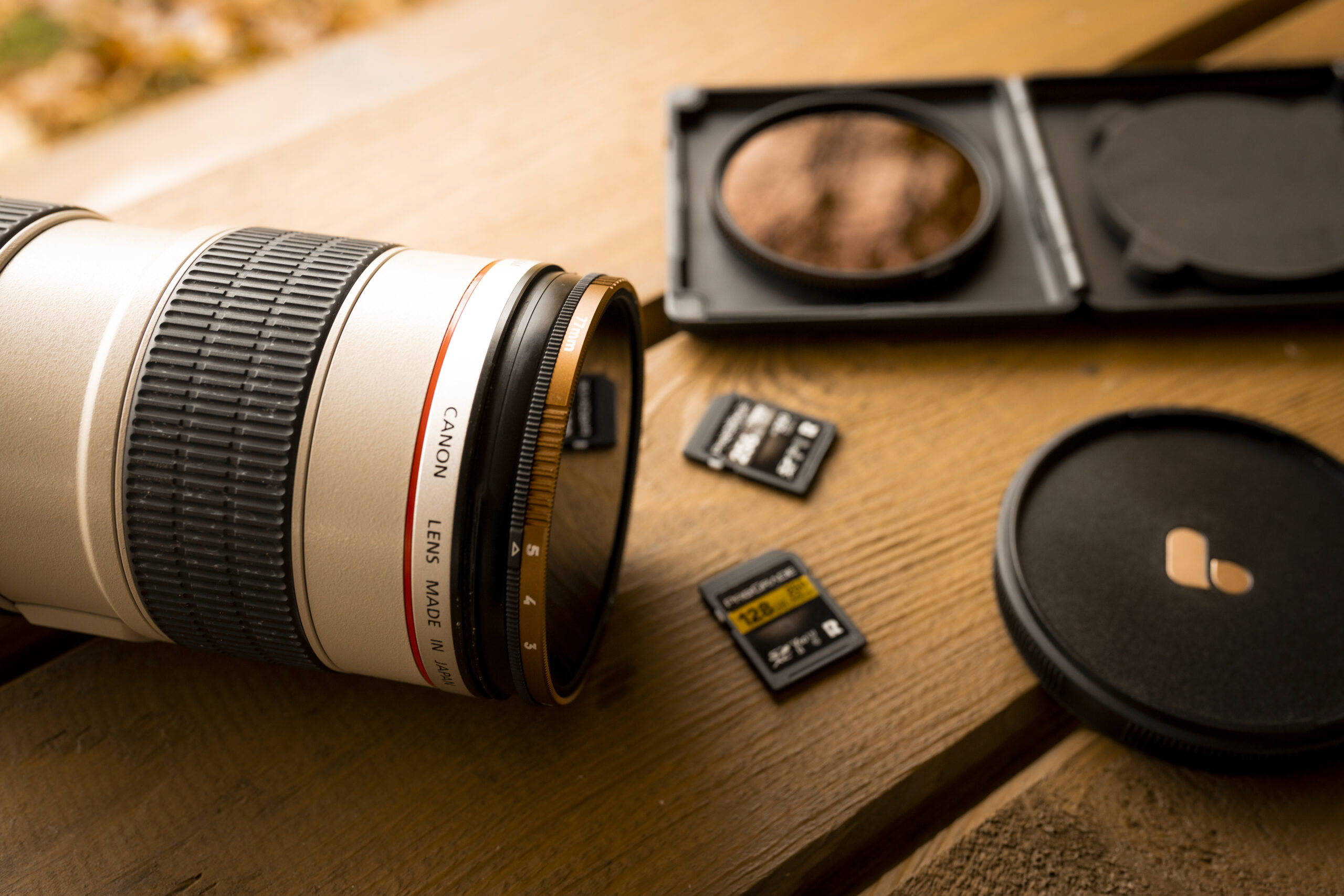Camera lens filters undoubtedly open up an entirely new world of creative possibilities. While most use filters primarily for protection or for managing thorny lighting conditions, others attach them to their lenses for a wide range of imaginative effects.
In this article, we’ll dive deeper into lens filters, how they work, and how you can use them in not-so-obvious ways to get stunning photos.
What are lens filters?
Lens filters are accessories you attach to the lens to modify the light that reaches the camera sensor. Aside from the dedicated protective filters – whose sole purpose is to shield the lens from moisture, dust, and fingerprints – the actual role of lens filters is to enhance the look of an image.
The following list is an overview of the most common lens filters – covering the purpose of each filter, how it functions, and when to use it. So when you’re done reading, you know precisely how to choose the correct filters and when you need one in the first place.
Ultraviolet (UV) Filter
Back in the old days, when there was no such thing as digital photography and everyone only shot on film, UV filters were critical to avoid photo discoloration. The film stock, made from celluloid and coated with a light-sensitive gelatin emulsion, is much more susceptible to UV light than digital camera sensors.
Nowadays, with the birth of DSLR and mirrorless cameras, ultraviolet filters have practically become obsolete. Unless you shoot on film, pretty much all they are good for is protecting the lens’s front glass. However, some “strong” UV filters are effective for reducing atmospheric haze and help get rid of the infamous purple edges that sometimes ghost slightly out of focus subjects.
The ultraviolet filter adds one more medium through which light needs to travel, hence reducing the quality of the final image. UV filters typically reduce the amount of light reaching the sensor by 0.5% to 5%. This reduction is virtually unnoticeable, but it’s still there.
Neutral Density (ND) Filter
The ND filter decreases the amount of light entering the camera. It lowers the intensity of all wavelengths and helps control the exposure in bright light conditions. This, in turn, gives you more control over shutter speed and aperture.
A neutral density filter is ideal for landscape photography, especially when you are after long- exposure effects like milky waterfalls.
Graduated Neutral Density (GND) Filter
GND filter is a variant of the ND filter. When ND filters reduce the amount of light uniformly, then graduated ND filters, like the name suggests, have a gradient and transmit light variably. Generally, half of the filter is transparent, while the other half has a neutral density. The transition between the darkened and transparent parts of the filter is either abrupt or gradual.
The graduated ND is an excellent filter for shooting landscapes and seascapes. It allows you to maintain a proper exposure of the land, water, or foreground subjects while reducing the brightness of the sky.
● Hard-edge graduated neutral density (GND) filter is primarily used for shooting high- contrast scenes where the sky is much brighter than the foreground and the horizon is flat. This filter transitions abruptly from dark to transparent.
● Soft-Edge graduated neutral density (GND) filter is also used to shoot high-contrast scenes with bright skies but where the horizon is not flat. The smoother transition of the soft edge makes the use of a filter less evident.
● A reverse graduated neutral density (GND) filter is a special filter for shooting the setting sun near the horizon. While typical GND filters transition from dark to clear around the center, reverse GND filters transition from dark to less dark from the center towards the edge.
● Center-spot filters are also graduated ND filters. They are opaque in the center and clear at the edges. These are mainly used for special effects or to compensate for light falloff with large-format wide-angle lenses. These filters are not needed with SLR cameras.
Polarizing Filter
Ever wonder how you never see unwanted reflections on windshields and windows in movies? The secret: polarizing filter. Besides darkening the overly bright skies by increasing the contrast between the sky and clouds, polarizing filters also reduce reflections from non-metallic surfaces – glass, water, etc. This allows you to shoot through a glass window or into the water without seeing your own or other undesirable reflections.
There are many different polarizing filters for you to play around with. The following two are perhaps the most popular besides the standard one:
● Gold-N-Blue Polarizer adds variable gold or blue tones to reflections depending on the filter’s orientation. Many pros consider it their “secret weapon” for capturing more color and life in a scene dominated by lackluster gray skies, flat shadowless lighting, and colorless waters.
● Varicolored Blue/Yellow Polarizer adds a blue or yellow tint to the image depending on the filter’s orientation. Allows color enhancement without changing the subject.
Color Balancing Filter
Color balancing filters are typically used to achieve accurate color rendition. They allow altering the noticeable tint or color of the light source being used to illuminate a subject – e.g., daylight that is cooler and appears blue or tungsten that is warmer and seems orange. By selecting the proper filter, color abnormalities can be fixed, and color can be brought back into balance. This allows for an objective evaluation of hue and shading.
Color balancing filters are also slowly becoming obsolete, as modern cameras have sophisticated image processing software and can fix color temperature irregularities. Not to mention the ever-evolving capabilities of the post-processing software we use to edit the images. That said, many photographers still use color balancing filters for different artistic effects.
Soft Focus Filter
Soft focus filters are designed to reduce the sharpness of an image. That said, adding a soft focus filter and defocusing your lens is not the same thing. Instead, soft focus filters diffuse the light. The effect is designed to be barely noticeable.
These filters add a dreamy glow and decrease the contrast in an image. This makes them perfect for shooting close-ups of people’s faces, as soft focus filters help smooth imperfect skin conditions.
Colored Filters
Colored filters are used mainly for black and white photography to control tone. They change the contrast between different areas by filtering out specific wavelengths of light.
A typical issue in black and white photography is that some shades of red, green, and blue look very similar when converted into grayscale. This can lead to certain objects blending into one another, resulting in flat and lifeless images with minimal definition and contrast.
Colored lens filters solve this problem by ensuring that objects are well separated and clearly defined. They essentially affect how your camera sees the colors.
● Red filters, for example, help make the clouds stand out by deepening a blue sky.
● Orange filters, then again, are great for abstract and urban photography as they increase the contrast between tones in textures.
● Yellow filters work wonders for the landscape photographer, as they help separate light
green vegetation from the darker shades of green.
Since green filters may lighten the sky and blue filters can bring out haze and fog, they are not so commonly used in black and white photography.
Creative Approach to Lens Filters
There are many more lens filters than listed above. For example, infrared filters block all visible light and allow only infrared light to pass; multivision filters create numerous copies of a subject, like a kaleidoscope; starglow filters make stars shine and bright light glow while accentuating the natural color of the light source; solar filters allow you to photograph the sun without capturing ultraviolet (UV) and infrared (IR) rays. And the list goes on and on.
While most filters are specifically designed for specific conditions to create specific effects, and they certainly add an artistic flair to your images, you can also create unique looks by using lens filters in not-so-obvious ways. Practically every filter has some creative applications.
Diffusion filters are a great example. These filters are primarily used to turn clinically sharp photos into cinematic, film-like images. At the same time, some photographers use them to produce glamorously glowing portraits with soft, wrinkle-free skins, others to get the realistic fog effect without extensive editing in Photoshop. You can also use them to turn prosaic landscapes into ethereal, almost out-of-this-world sceneries or shoot authentic retro-style images.
Photography offers endless applications for lens filters. So get out there, experiment, and have fun.
Memory Cards and Card Readers for Professional
Photographers
Card corruption, data loss, and waiting for images to download have no home here. Tackle your photography goals with ProGrade Digital Memory Cards and Workflow Readers, used daily by world-class photographers.





